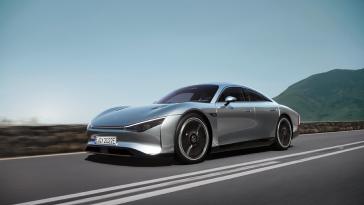I like our chances of being involved here, .................developed by the University?
One reason for the human brain’s incredible power is its ability to rewire itself as it learns. Now, researchers at Purdue University have created electronic circuits that can do the same. The Purdue research team has created a brain-inspired computer chip that could transform the development of human-level AI.
They have demonstrated new circuit components whose functions can be reconfigured with electronic pulses in the form of an innovative circuit capable of rewiring itself as it learns.
This allows them to seamlessly switch between acting as resistors, memory capacitors, artificial neurons, and artificial synapses. The breakthrough opens the door to creating dynamic neural networks in hardware that can rewire themselves as they learn, just like the human brain.
The chip contains “reconfigurable neuromorphic functions”, allowing it to be reprogrammed at room temperature by simple electrical pulses. These pulses generate the different functions of neurons, synapses and memory capacitors, which are crucial for achieving adaptive learning that humans excel at. “The brains of living beings can continuously learn throughout their lifespan. We have now created an artificial platform for machines to learn throughout their lifespan,” said
Shriram Ramanathan, a professor in Purdue University’s School of Materials Engineering. “If we want to build a computer or a machine that is inspired by the brain, then correspondingly, we want to have the ability to continuously program, reprogram and change the chip.” he said.
A study describing the breakthrough, published in the journal Science, details how the chip is able to optimise its underlying hardware in order to meet new challenges as they arise.
The researchers tested the chip’s performance on individual devices, before using the data to simulate a large network of them. Through this method, known as reservoir computing, they were able to outperform other theoretical and experimental models at certain learning tasks.
The network was also able to function as a “Grow When Required” (GWR) neural network, which allows it to grow and shrink depending on the size of the task. This optimises the chip’s efficiency in a way that conventional chips are unable to, and allows it to “pick and choose” which circuits are the best fit for addressing problems.
The design of the new chip could also help make artificial intelligence more portable, such as for autonomous vehicles or robots, as the AI could be embedded directly into hardware rather than just running on software. The researchers are now working to demonstrate the chips on a larger scale, with the eventual goal of building a brain-inspired computer.

